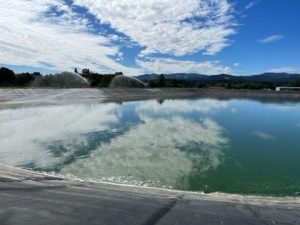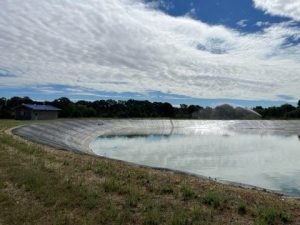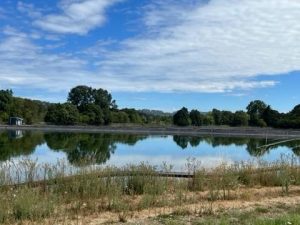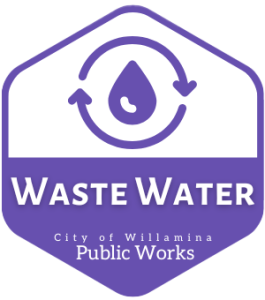Waste Water
 The Willamina waste water service is a division of the Willamina Public Works Department and is committed to serving the community and protecting the environment through excellent maintenance and operations of the facilities, keeping communication with the community, and follow all the state and federal water quality rules required.
The Willamina waste water service is a division of the Willamina Public Works Department and is committed to serving the community and protecting the environment through excellent maintenance and operations of the facilities, keeping communication with the community, and follow all the state and federal water quality rules required.
What is waste water and a lagoon?
Generated after the use of freshwater, raw, drinking, or saline water in different applications or processes is known as wastewater. It’s also defined as used water from any combination of domestic, industrial, commercial, or agricultural activities, surface runoff, storm water and any sewer or sewer infiltration. Short story, wastewater is commonly known as sewage.
Willamina’s wastewater system consist of lagoons. Lagoons are pond like bodies of water designed to receive, hold, and treat wastewater for a period of time. Also known as effluent ponds, they break down germs in the lagoons. The sun and wind play an important part by providing light, warmth, and oxygen to the water. This is important for the growth of the bacteria in the water.
 The light, warmth and oxygen aid in the growth of algae, which give the lagoon the greenish color. The algae also help the bacteria break down the sewage.
The light, warmth and oxygen aid in the growth of algae, which give the lagoon the greenish color. The algae also help the bacteria break down the sewage.
The wind helps evaporation of the water and serves to get oxygen into the water. It can also create waves, which stop insects from breeding and living in the water.
The treatment is a combination of physical, biological, and chemical processes. Most of the process occurs naturally, thought there are some systems that use aeration devices to add oxygen. Aeration makes the treatment more efficient, which means less land is needed. Aerators can also be used to allow existing systems to treat more wastewater. Lagoons have to be designed depending on the type of land, soil, and climate. It also has to be considered how much wastewater is going to be treated and at what level of treatment is required.
There are different kinds of lagoons; Anaerobic, Naturally Aerobic, and Aerated.
 Anaerobic: “without oxygen” are common for use to treat animal wasted from dairies and pig farms, commercial or industrial wastes, or a first treatment in a system of two or more lagoons
Anaerobic: “without oxygen” are common for use to treat animal wasted from dairies and pig farms, commercial or industrial wastes, or a first treatment in a system of two or more lagoons
Naturally Aerobic: Dissolved oxygen throughout the depth of these lagoons. Much shallower then other lagoons, so the sunlight and oxygen from the air and wind can penetrate better. Best suited for warm, sunny climate where it won’t freeze. These lagoons happen naturally due to be shallow that they have the aid of aerobic bacteria and algae to help break down the wastewater.
Aerated: Common in small towns, like Willamina. Aerated lagoons use aerators to mix the contents and add oxygen in the wastewater. Aeration makes the treatment more efficient, less land and shorter detention times.
The Willamina wastewater lagoons are eco-friendly and cost-effective. They restore water quality and reduce the algae, plus the mosquito problems. It’s like using nature to restore nature

